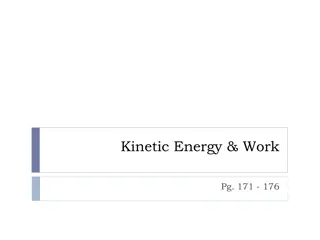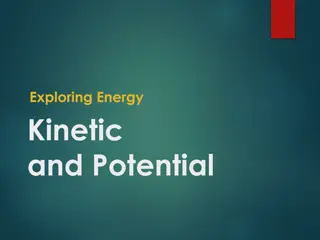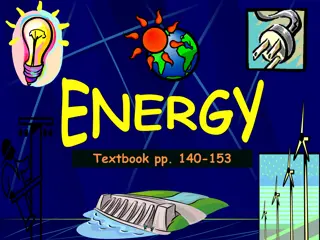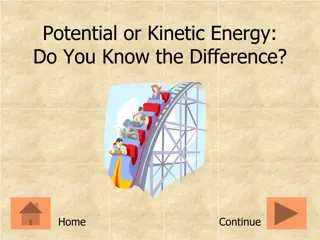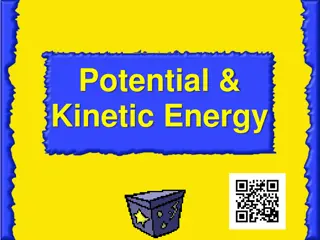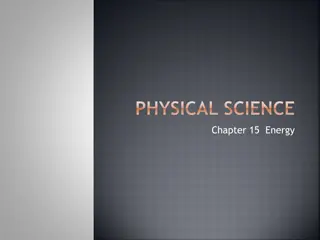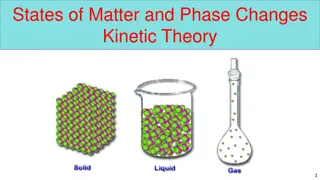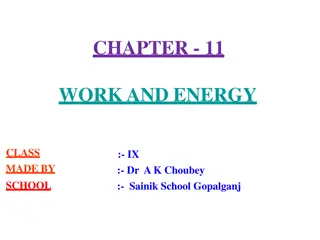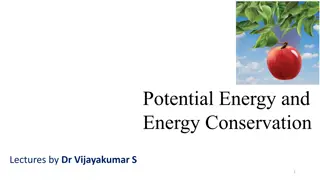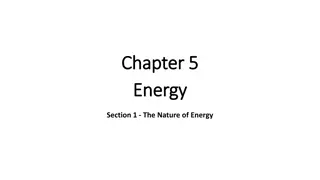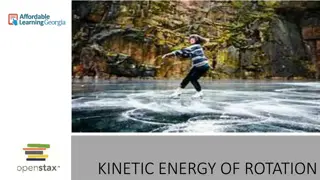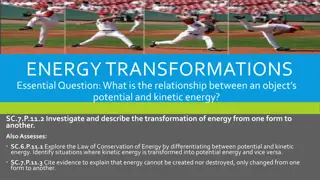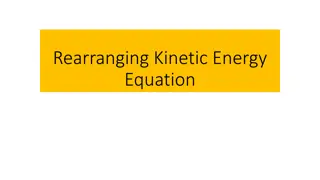Understanding Energy: Potential and Kinetic Forms in Grade 7 Natural Sciences
Energy in various forms is explored in Grade 7 Natural Sciences, with a focus on potential and kinetic energy. Energy is the ability to do work and exists in different types like heat, chemical, electromagnetic, nuclear, and mechanical. The sun serves as a primary energy source. Potential energy is stored within objects or systems, while kinetic energy is the energy of movement. Examples of potential and kinetic energy in everyday life are discussed, showcasing how energy is present in various phenomena.
Download Presentation

Please find below an Image/Link to download the presentation.
The content on the website is provided AS IS for your information and personal use only. It may not be sold, licensed, or shared on other websites without obtaining consent from the author. Download presentation by click this link. If you encounter any issues during the download, it is possible that the publisher has removed the file from their server.
E N D
Presentation Transcript
Natural Sciences Grade 7 Term 3: Energy and Change Potential and kinetic energy
Topic 2 Potential and kinetic energy What is energy? Natural Sciences - Grade 7
What is energy? Energy is the ability to do work. Energy cannot be created or destroyed. It is only changed from one type of energy to another. The sun is our main source of energy. Energy can be divided into two main forms, namely potential and kinetic energy. Natural Sciences - Grade 7
Energy Energy Energy is all around us - most of the time we are not even aware of it. Plants use the light energy from the sun to make food during photosynthesis. Animals and plants need food to get energy for all living processes. Natural Sciences - Grade 7
Energy Energy Wind is air particles in motion because the particles have energy. The sounds we hear is also a form energy. We burn coal and other fuels to release energy. Natural Sciences - Grade 7
The different types of energy There are five different types of energy: Heat Chemical Electromagnetic Nuclear Mechanical Natural Sciences - Grade 7
Two main forms of energy All energy types can be divided into two main forms: Potential energy - Energy that is stored within objects or systems. Kinetic energy - Energy possessed by objects or a system as a result of movement. Natural Sciences - Grade 7
Examples of potential energy Chemical energy that can change to electrical energy when using a cell. Elastic energy when a rubber band is stretched. Gravitational potential energy. The ball and the brick gain energy when lifted from the ground. Natural Sciences - Grade 7
Examples of kinetic energy A pogo stick, when someone jumps on it, has kinetic energy, due to its motion. A racing motorcycle has lots of kinetic energy. Can you think of other examples of moving objects or systems? The ball gains kinetic energy when kicked. Natural Sciences - Grade 7
A closer look at gravitational potential energy All objects (matter) will experience the force of gravity. Gravity is the force causing all objects to fall to the ground. The higher an objected is lifted, the greater the potential energy. The heavier an object, the greater its potential energy. Natural Sciences - Grade 7
A closer look at gravitational potential energy When the object falls to the ground, the potential energy changes into kinetic energy (because it moves). When the object rests on the ground, it has no potential energy. Natural Sciences - Grade 7






